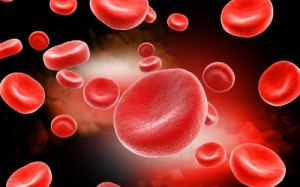Pernicious Anemia, Sickle Cell, and Others: Anemia is a serious blood disease resulting in low blood cell production; aside from vitamin B12 deficiency from pernicious anemia, how many other types of anemia are there?
What are the different kinds of anemia?
There are six general types of anemia. They include:
Pernicious Anemia (PA)
Pernicious anemia is an acquired disease that causes vitamin B12 deficiency. Vitamin B12 is crucial for producing healthy red blood cells, in addition to supporting your nervous system, promoting mental clarity, and optimizing your metabolism. With pernicious anemia, you are unable to absorb vitamin B12 from natural food sources, resulting in severe depletion of vitamin B12 levels in your blood.
Symptoms of vitamin B12 deficiency include:
- fatigue
- dizziness
- tingling in your hands and/or feet
- “brain fog”
- memory loss
- depression
- aggression.
If diagnosed with pernicious anemia, your doctor may recommend weekly vitamin B12 injections, which are inserted in the thick thigh muscle or buttock. Vitamin B12 shots require a prescription, may cause bruising, and are usually painful.
As an alternative, patients may opt for gentle over-the-counter (OTC) vitamin B12 supplements that don’t require injection.
Also read: B12 Deficiency can really Get on your Nerves
Hemolytic Anemia (HA)
Hemolytic anemia occurs when red blood cells are destroyed (hemolysis) at a rate that is quicker than their reproduction in bone marrow. People who have hemolytic anemia have either inherited it as a genetic disease, or acquired it later in life. Mild hemolytic anemia does not usually require treatment, but severe anemia can be life-threatening, requiring blood transfusions, steroids, or splenectomy.
Sickle Cell Anemia (SCA)
Sickle cell anemia is an inherited blood disease. In sickle cell anemia, abnormally shaped hemoglobin cells become obstructed in small blood vessels, causing pain and possible organ damage to the anemic individual. There is no cure for sickle cell anemia, but therapies for reducing the symptoms of anemia include antibiotics, pain relievers, and blood transfusions.
Aplastic Anemia (AA)
Aplastic anemia is a blood disease that can be life threatening. In aplastic anemia, your bone marrow is unable to produce sufficient amounts of crucial blood cells, including red blood cells, white blood cells, and blood platelets. Diagnosis of anemia includes testing that indicates low blood count of any of the three blood cells types. Causes of aplastic anemia include autoimmune disease (most common) or exposure to chemotherapy and other types of radiation. Possible treatments for aplastic anemia include bone marrow transplants, blood transfusions, and restraining of the immune system. Untreated, aplastic anemia can be fatal.
Fanconi Anemia (FA)
Fanconi anemia is a rare blood disorder, and it is inherited as a genetic disease. Fanconi anemia involves bone marrow failure, and can lead to myelogenous leukemia. Even with bone marrow transplants, patients of Fanconi anemia rarely live past the age of thirty.
Bone Marrow Disease Anemia
Sometimes, bone marrow diseases, such as leukemia and myelodysplasia (pre-leukemia), create symptoms of anemia in patients, as diseased bone marrow causes inadequate production of red blood cells.
Related reading:
“I’ve heard of the X Factor and Fear Factor…But what’s Intrinsic Factor?”
B12 Deficiency: Don’t Ignore the Symptoms
Sources:
Anemia: Types of Anemia- Healthplus24.com
What Are the Signs and Symptoms of Pernicious Anemia? -NHLBI, NIH
Images courtesy of FreeDigitalPhotos.net



